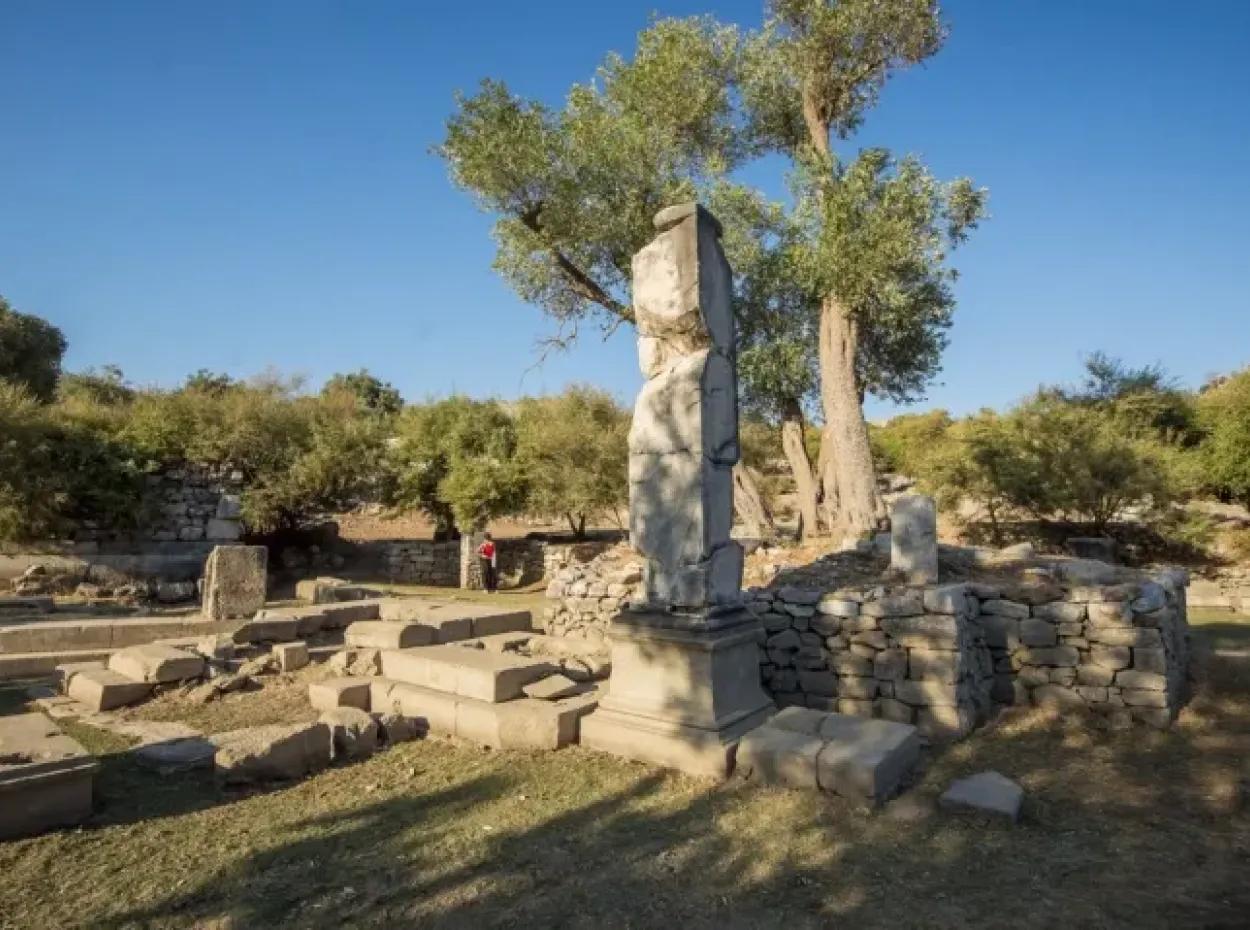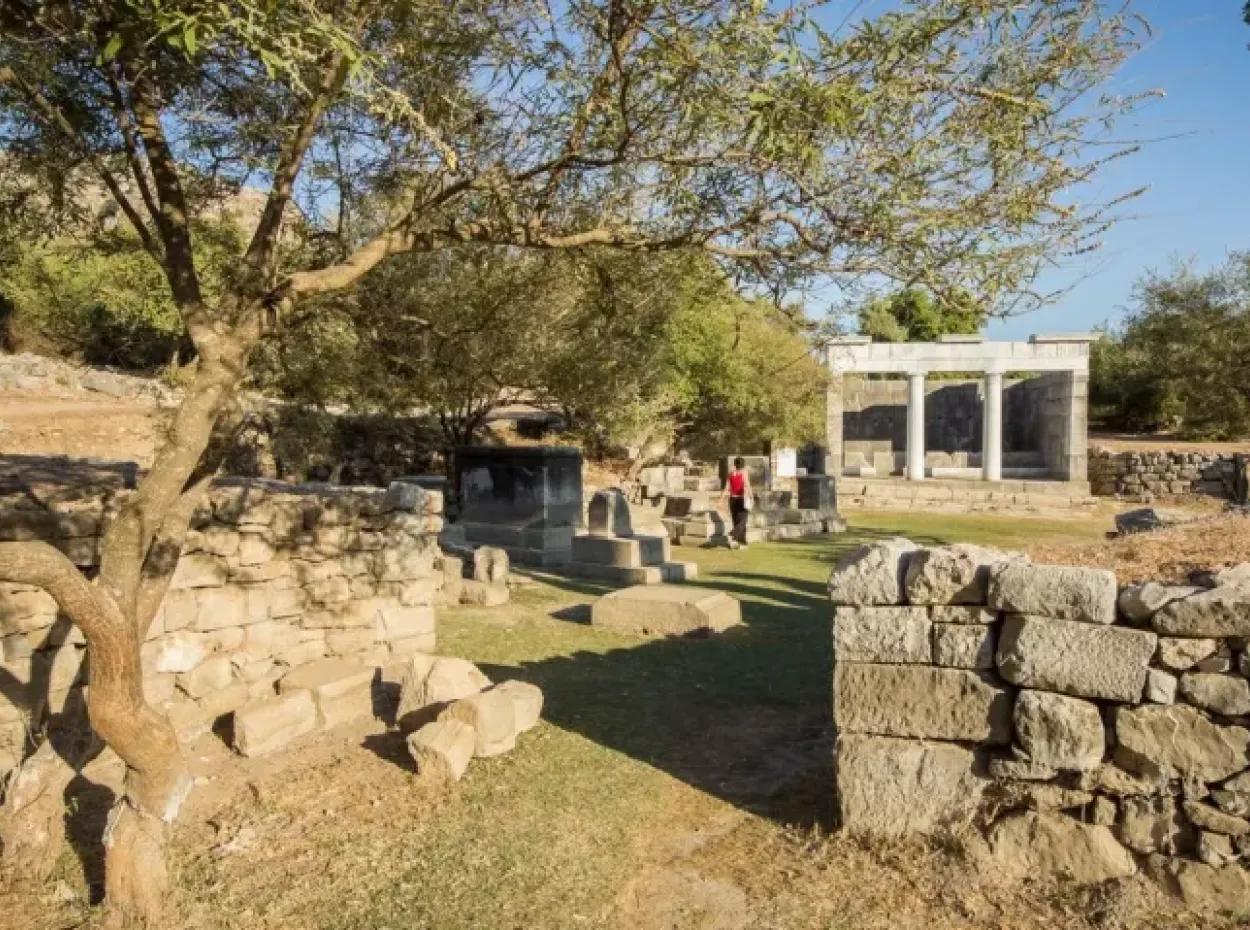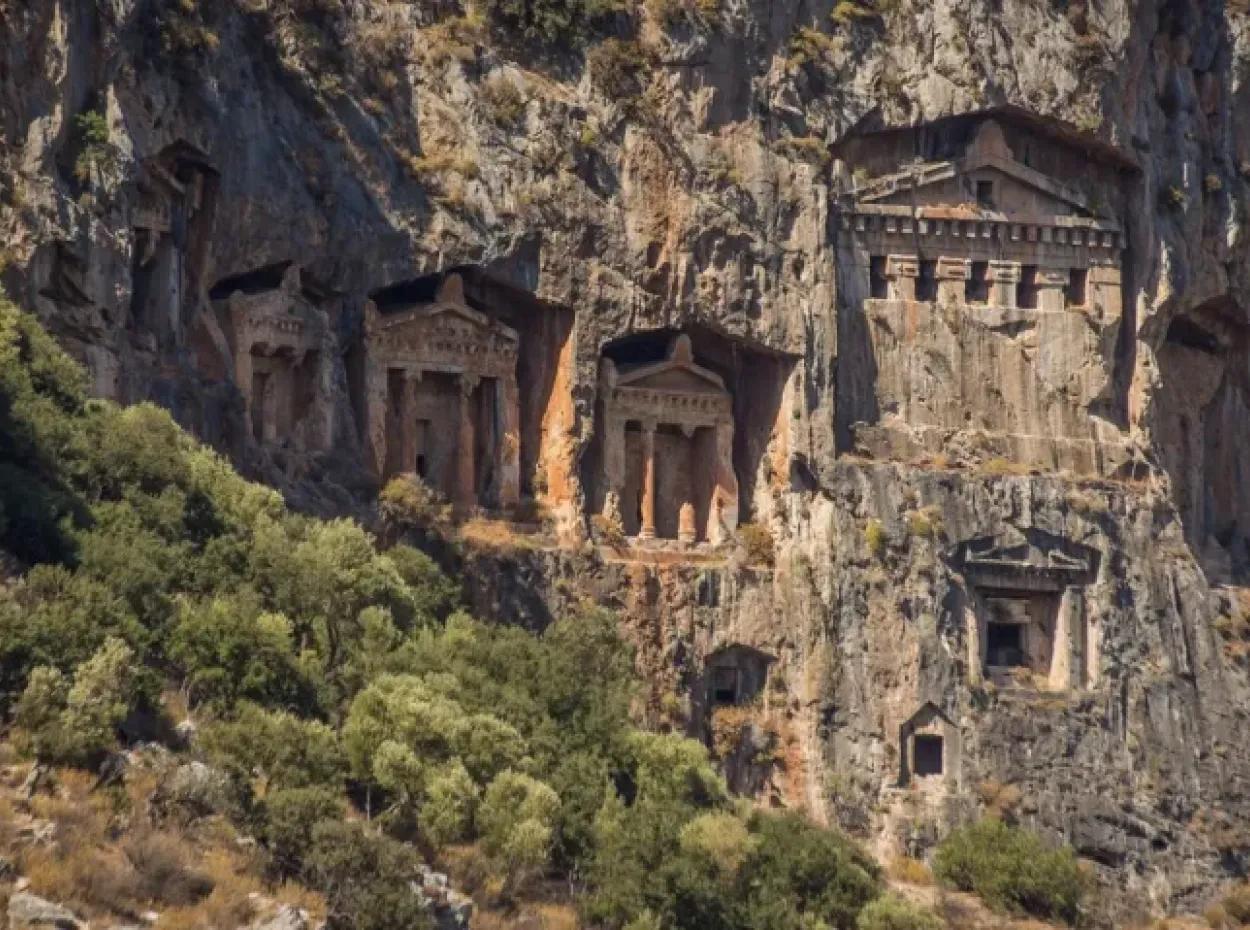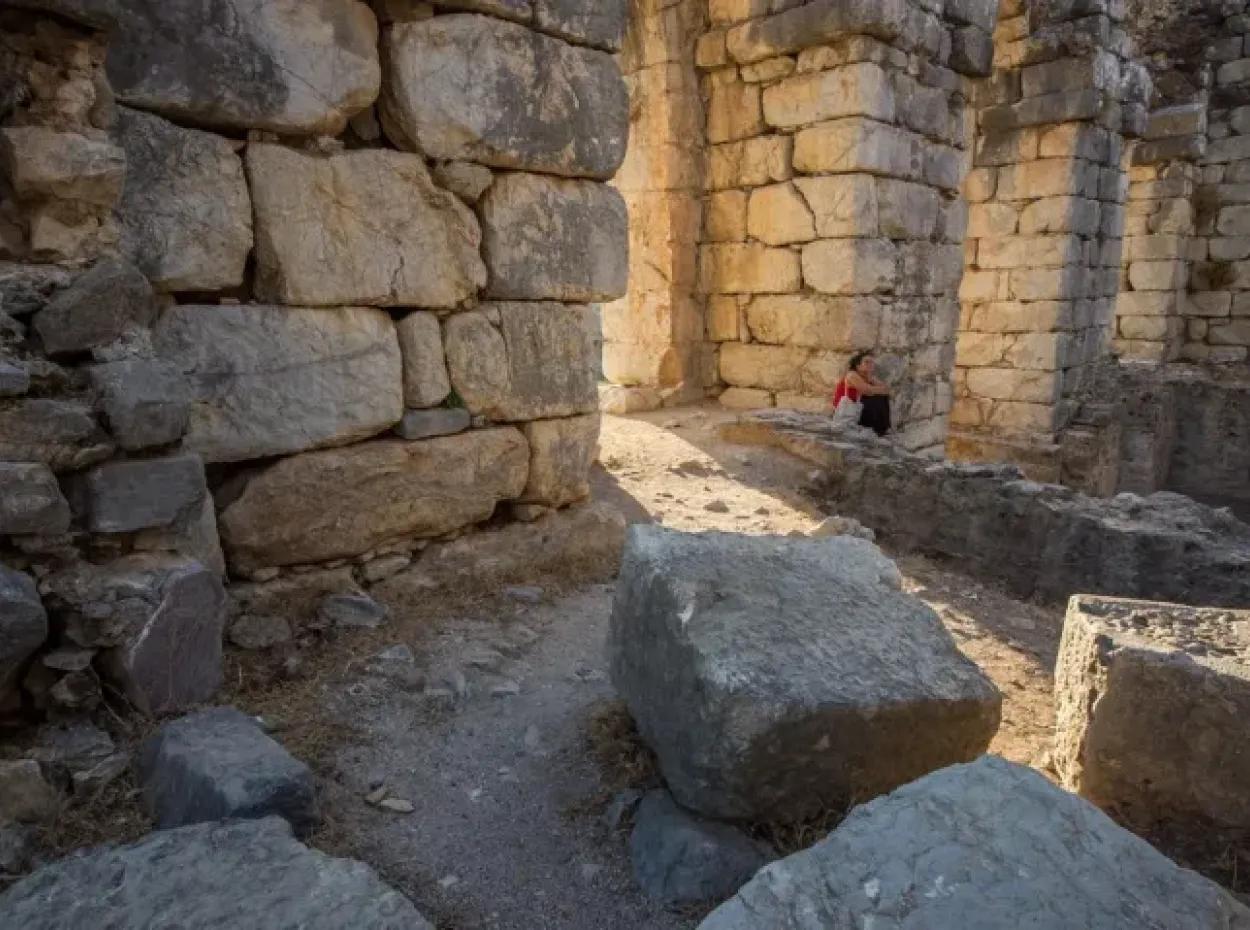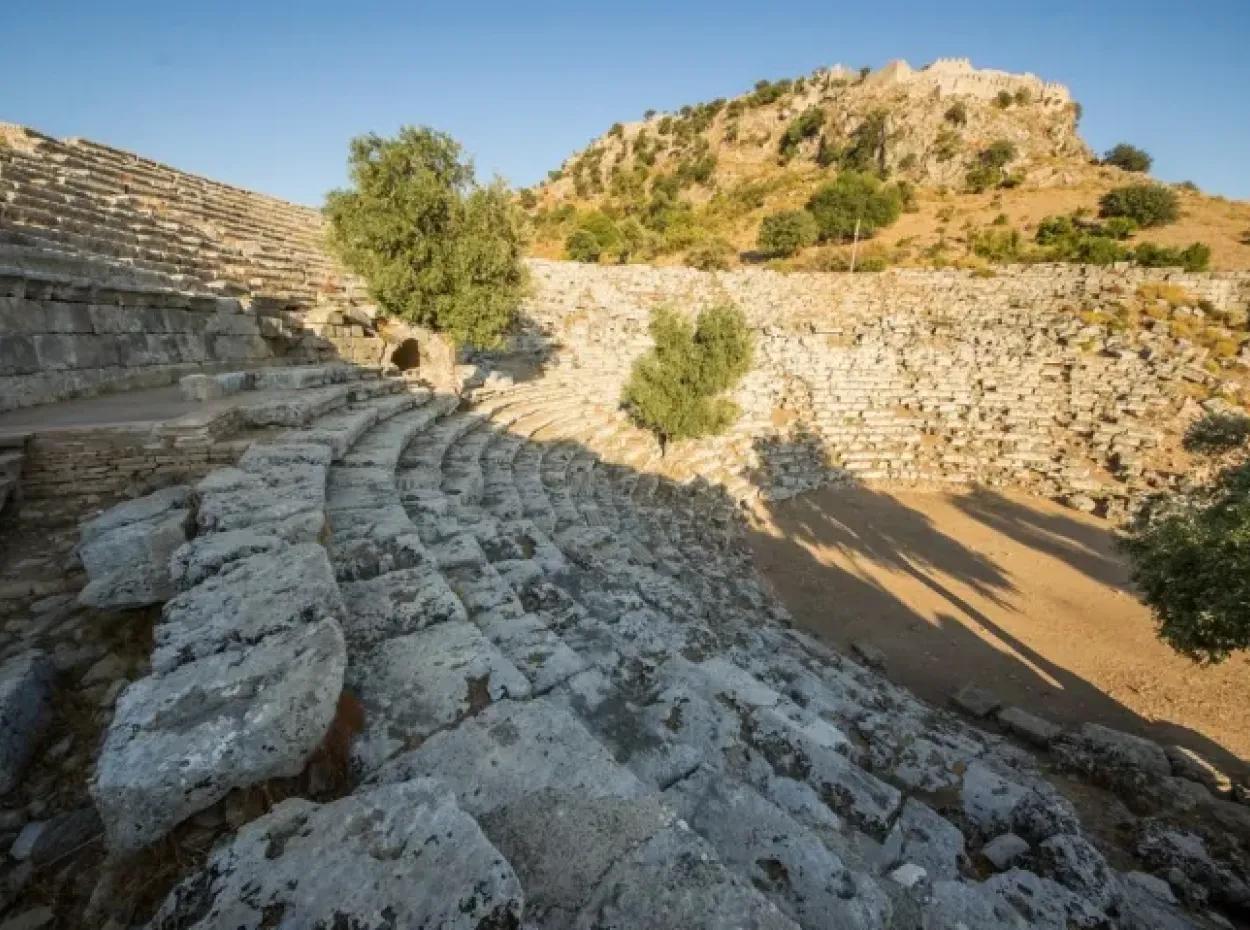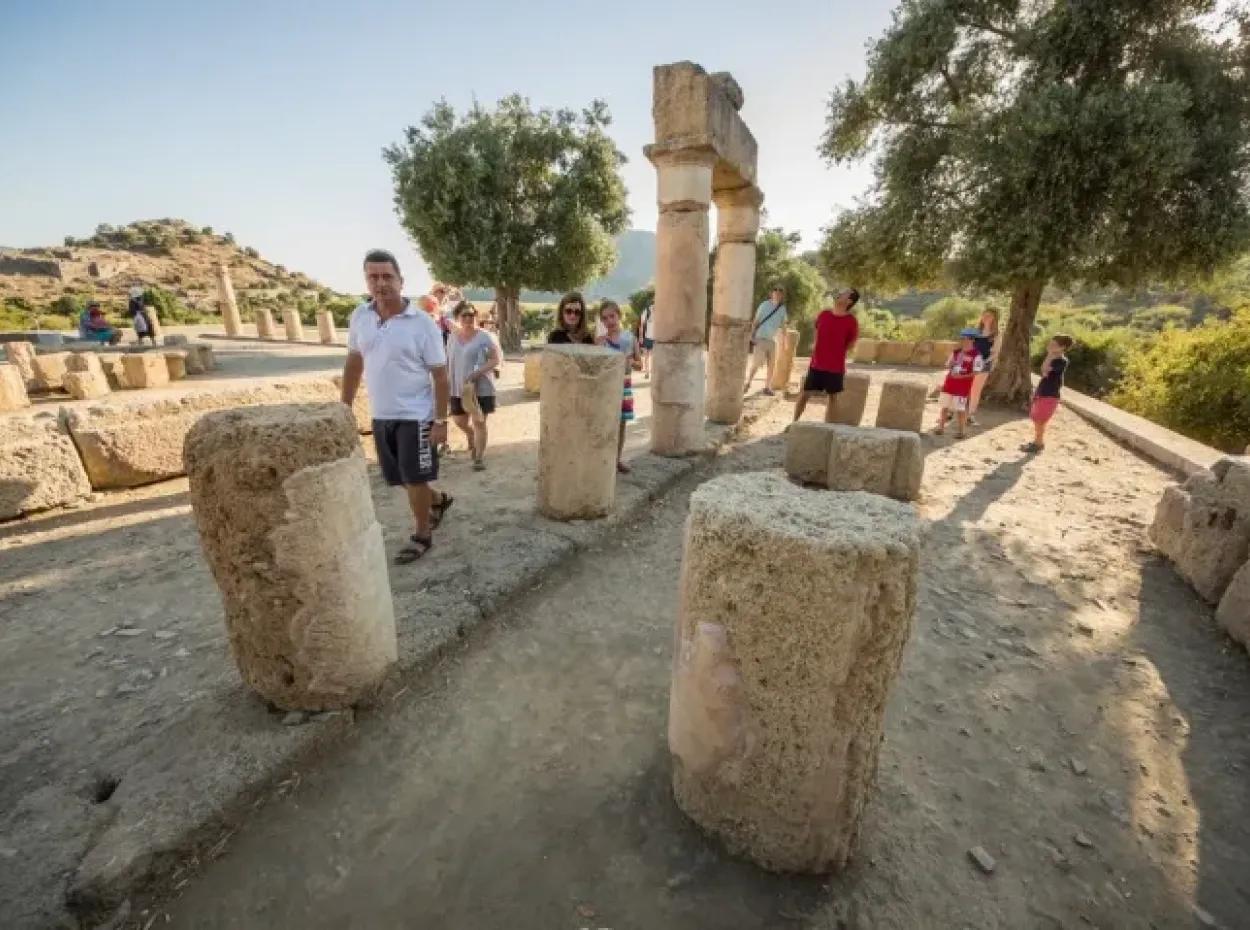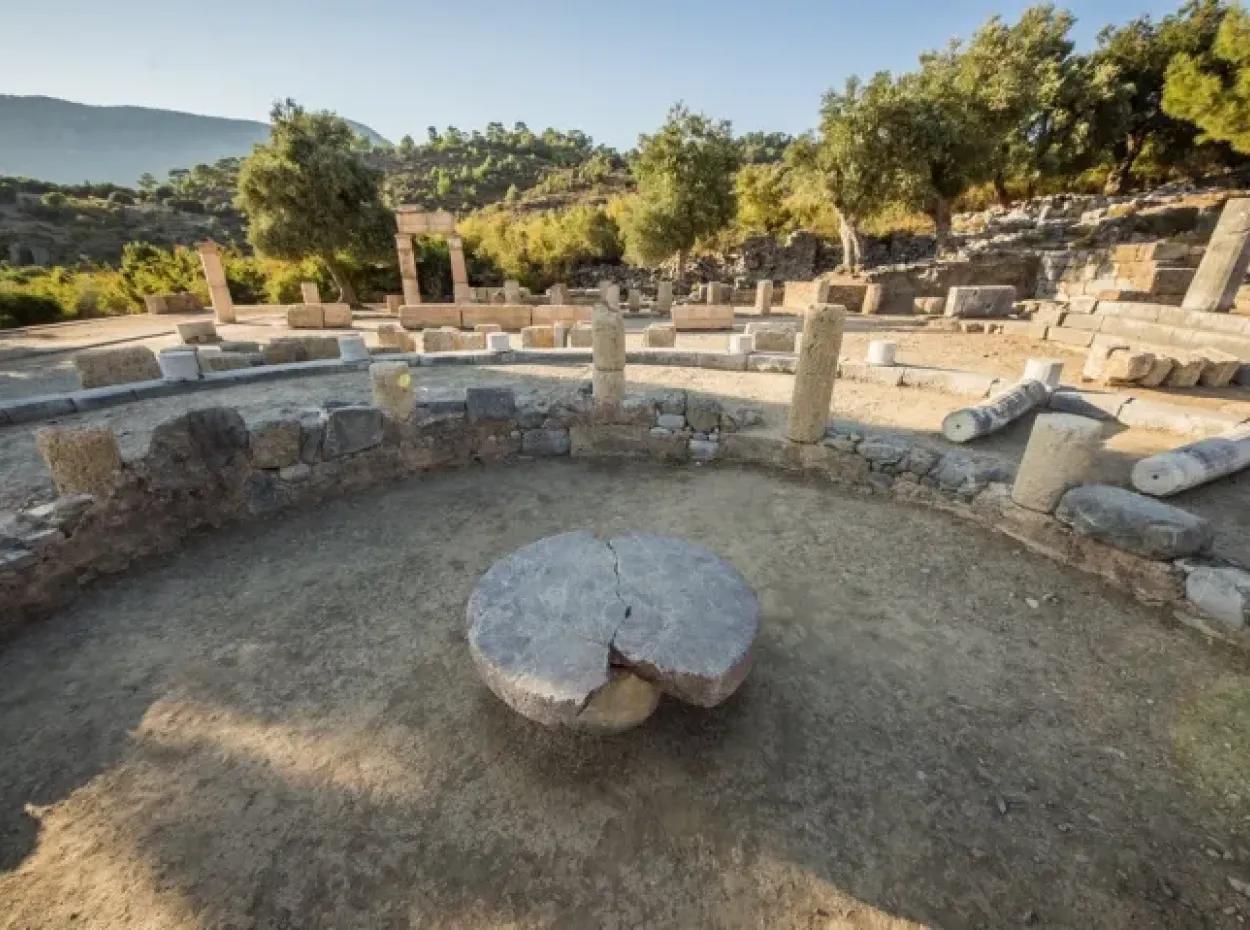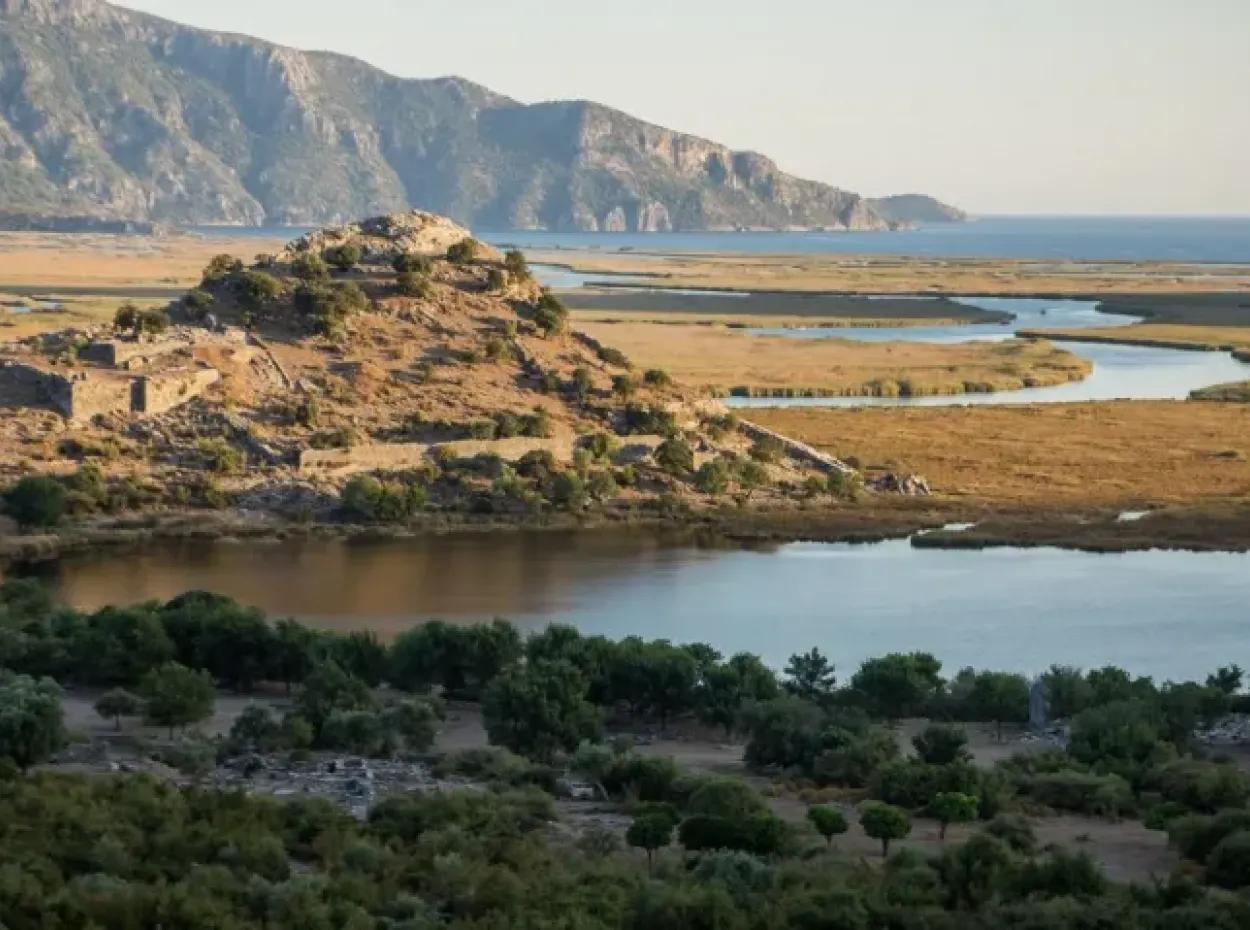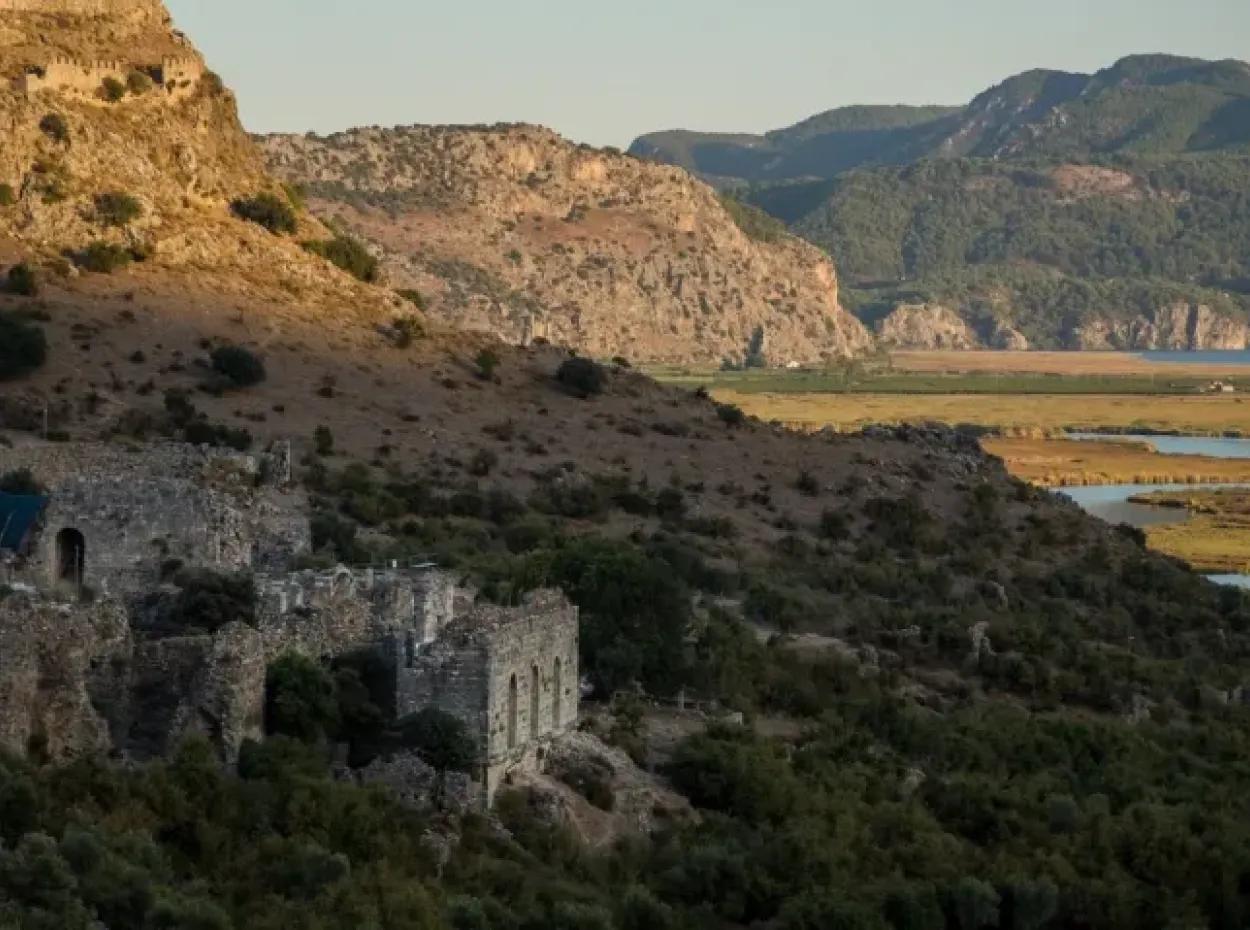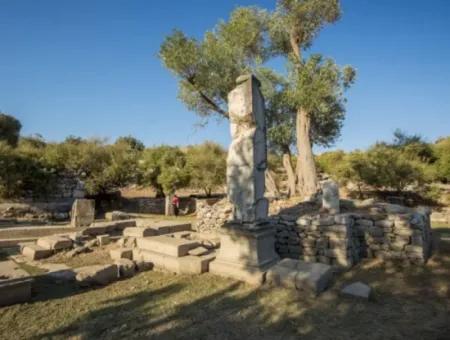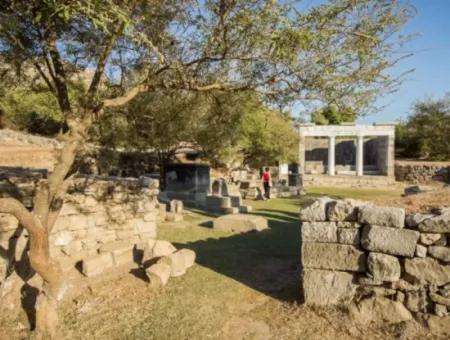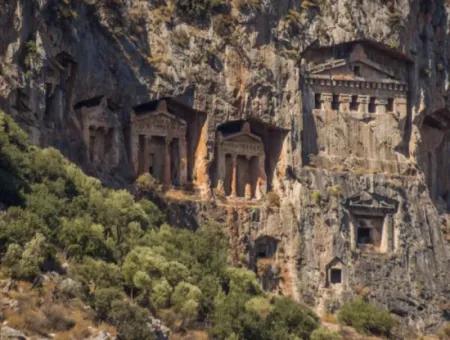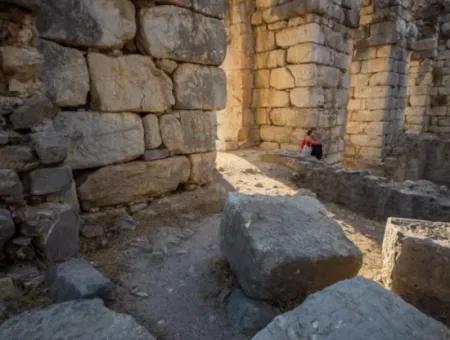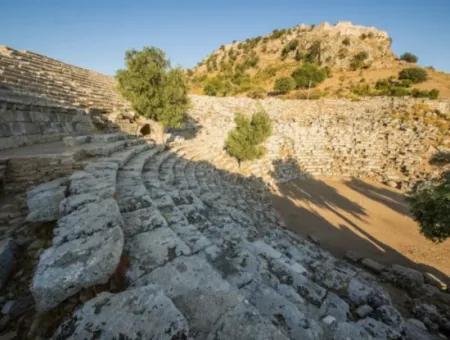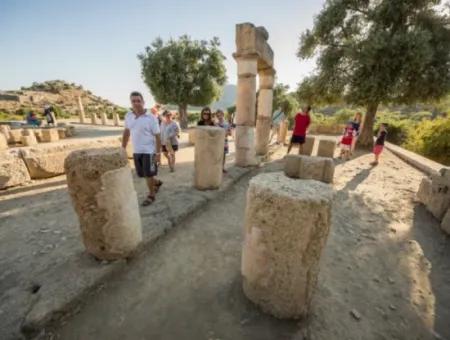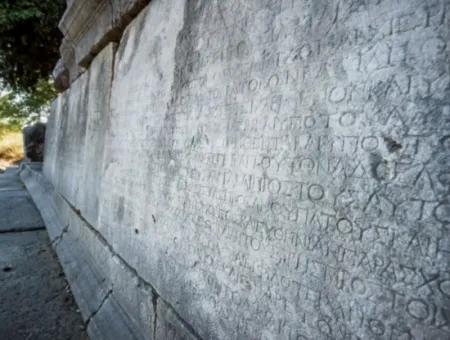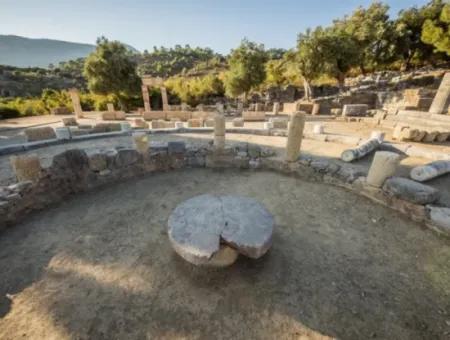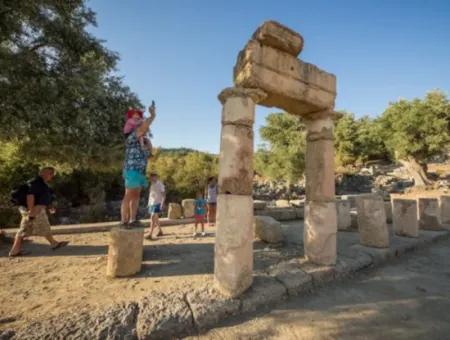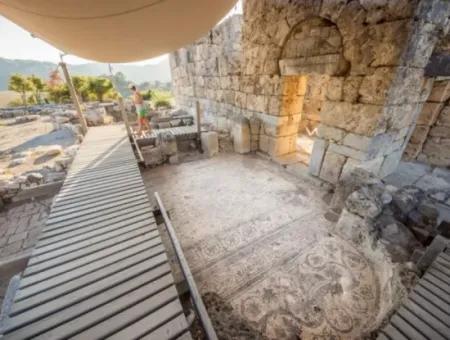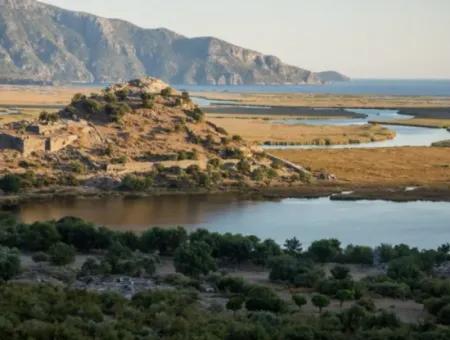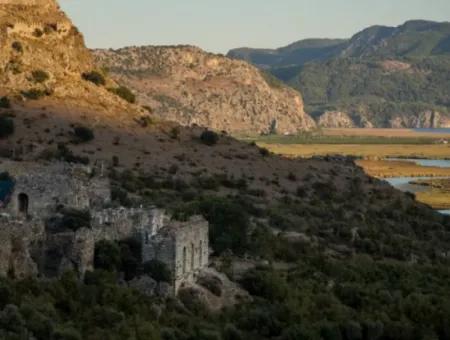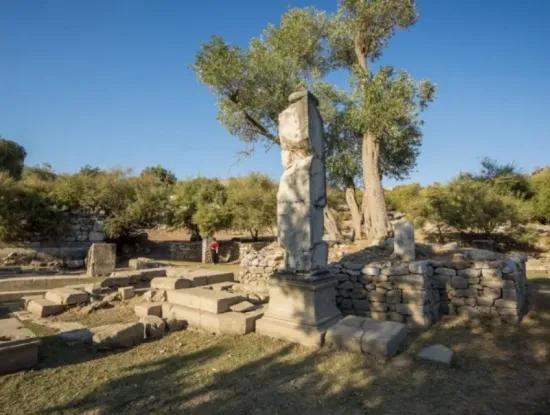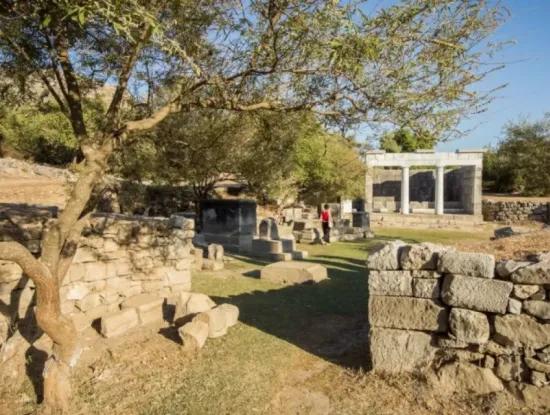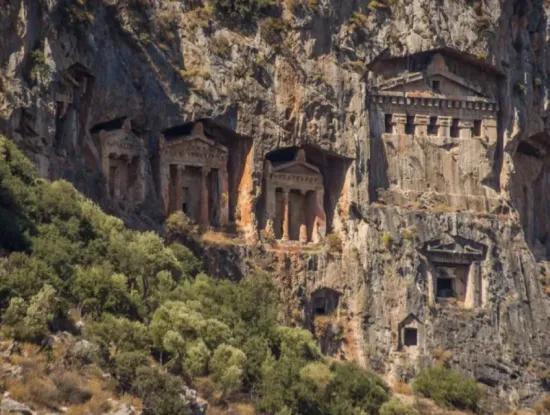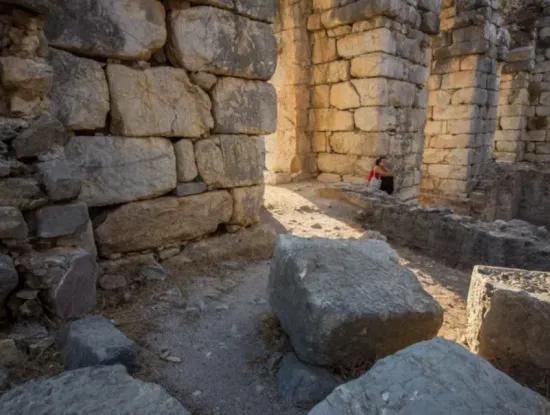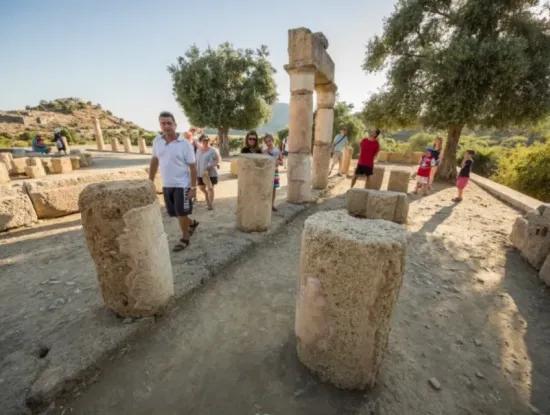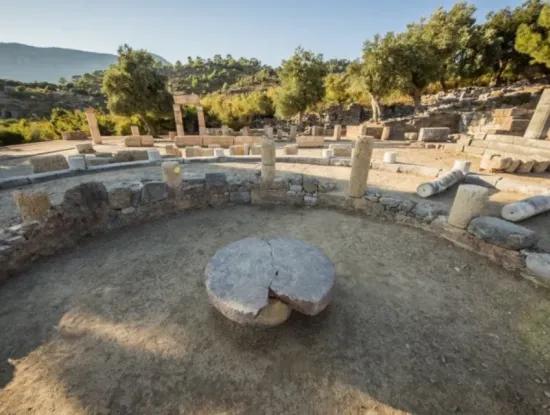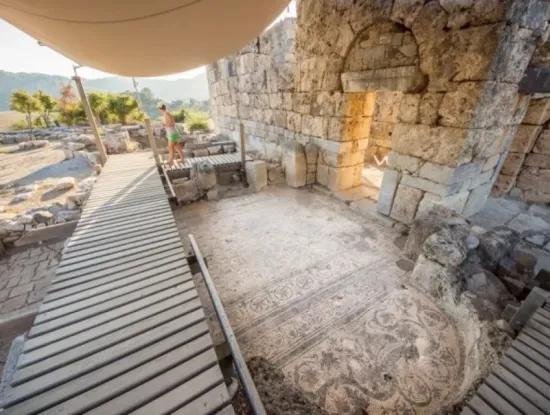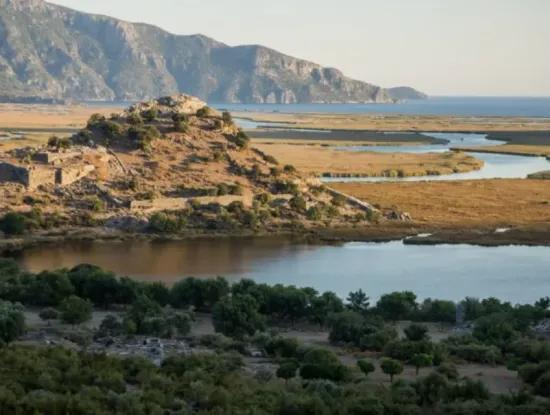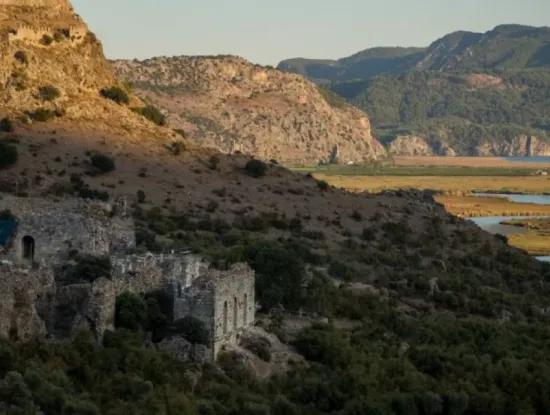The ancient city of Kaunos, on the banks of the Dalyan canal connecting Lake Köyceğiz to the Mediterranean Sea, starts from the north of the port and ends on the cliffs at the top of dalyan village. According to legend, Kaunos, the son of Miletos, did not respond to his love when his sister Byblis fell in love with him, and Byblis hanged himself. Kaunos, who was exiled, came to the Karya region and founded the city. Since then, it has become traditional to call love that ends in such pain the love of Kaunos.
Kaunos was first discovered by English Rd. Hoskyn. During his visit in 1840, Hoskyn concluded that the region was the city of Kaunos from the inscription "Kaunos people and assembly" on a written block. The most important feature of the ancient city is the rock tombs that stand tall even today. According to The Amasya geographer Strabon, there were shipyards in Kaunos and a port below the Acropolis (Castle and Walls, City center) (Now Leech Lake). Back then, the sea was coming all the way to the Acropolis.
The ancient city of >Caunos took over over the kingdom of Persian, Egyptian, Rhodes, Pergamon and the Roman empire over time. It lost its importance after the sea receded and the port of Kaunos was filled with sand. The northern walls of the city are shaped like medieval ruins. The Kaunos city theatre is at the bottom of the Acropolis, in 33 rows. The city also has a Roman bath, Temple, Basilica, meeting room and many sculptural bases.
Kaunos was first discovered by English Rd. Hoskyn. During his visit in 1840, Hoskyn concluded that the region was the city of Kaunos from the inscription "Kaunos people and assembly" on a written block. The most important feature of the ancient city is the rock tombs that stand tall even today. According to The Amasya geographer Strabon, there were shipyards in Kaunos and a port below the Acropolis (Castle and Walls, City center) (Now Leech Lake). Back then, the sea was coming all the way to the Acropolis.
The ancient city of >Caunos took over over the kingdom of Persian, Egyptian, Rhodes, Pergamon and the Roman empire over time. It lost its importance after the sea receded and the port of Kaunos was filled with sand. The northern walls of the city are shaped like medieval ruins. The Kaunos city theatre is at the bottom of the Acropolis, in 33 rows. The city also has a Roman bath, Temple, Basilica, meeting room and many sculptural bases.


